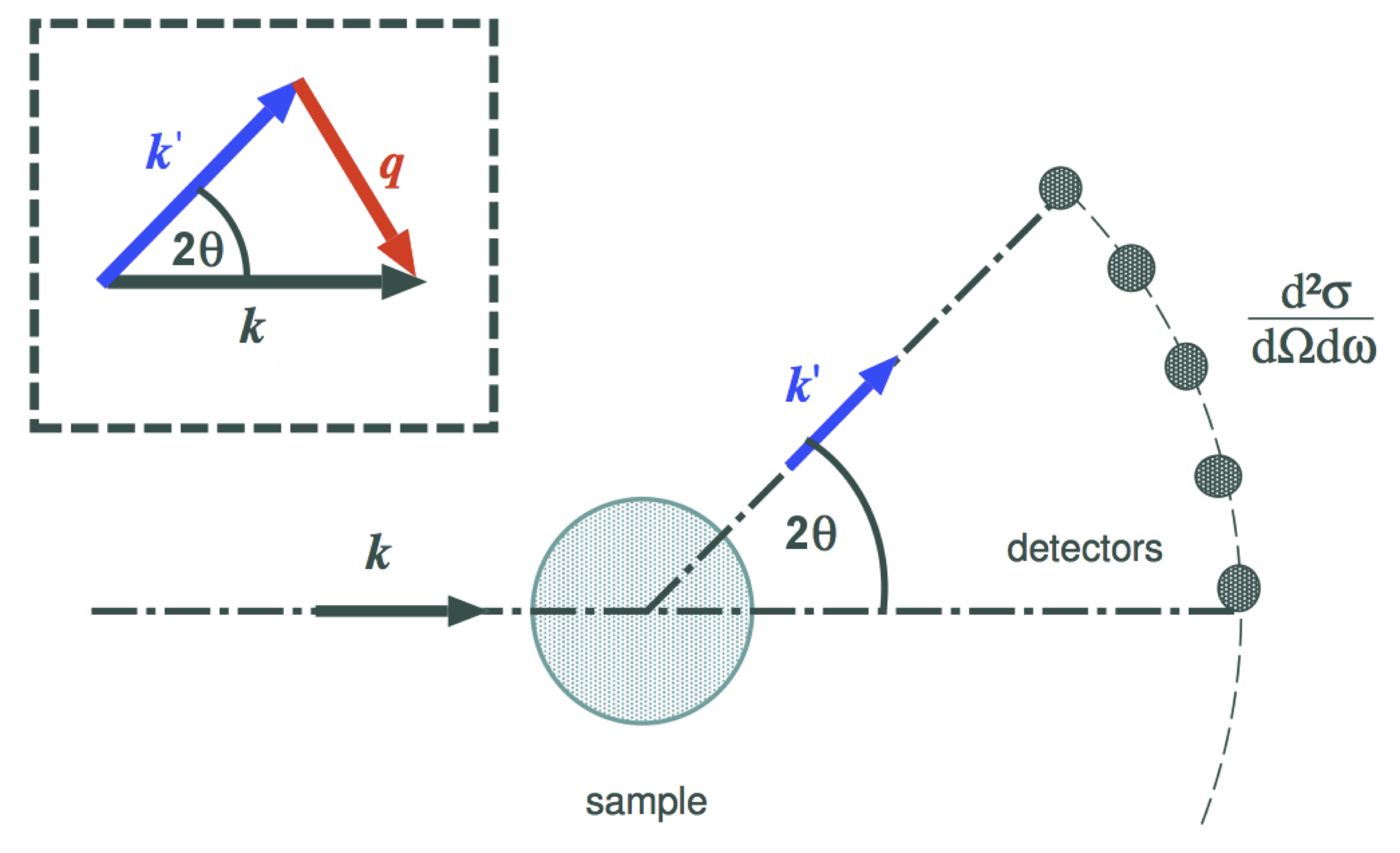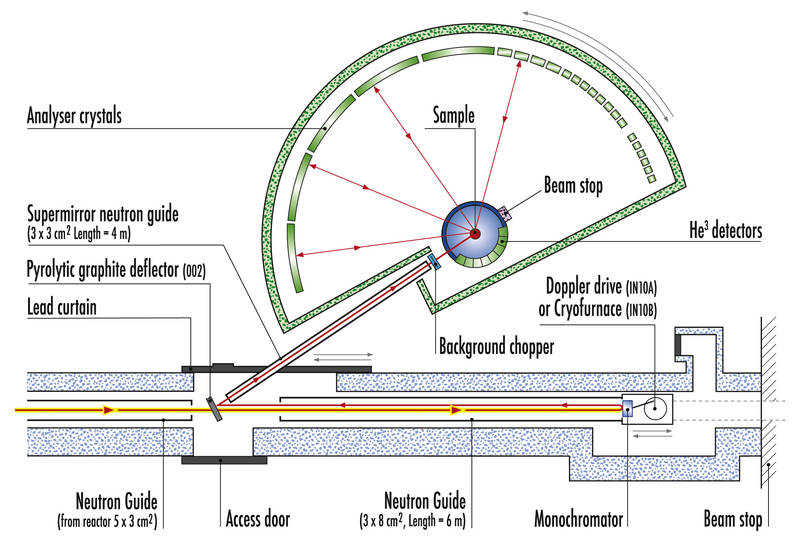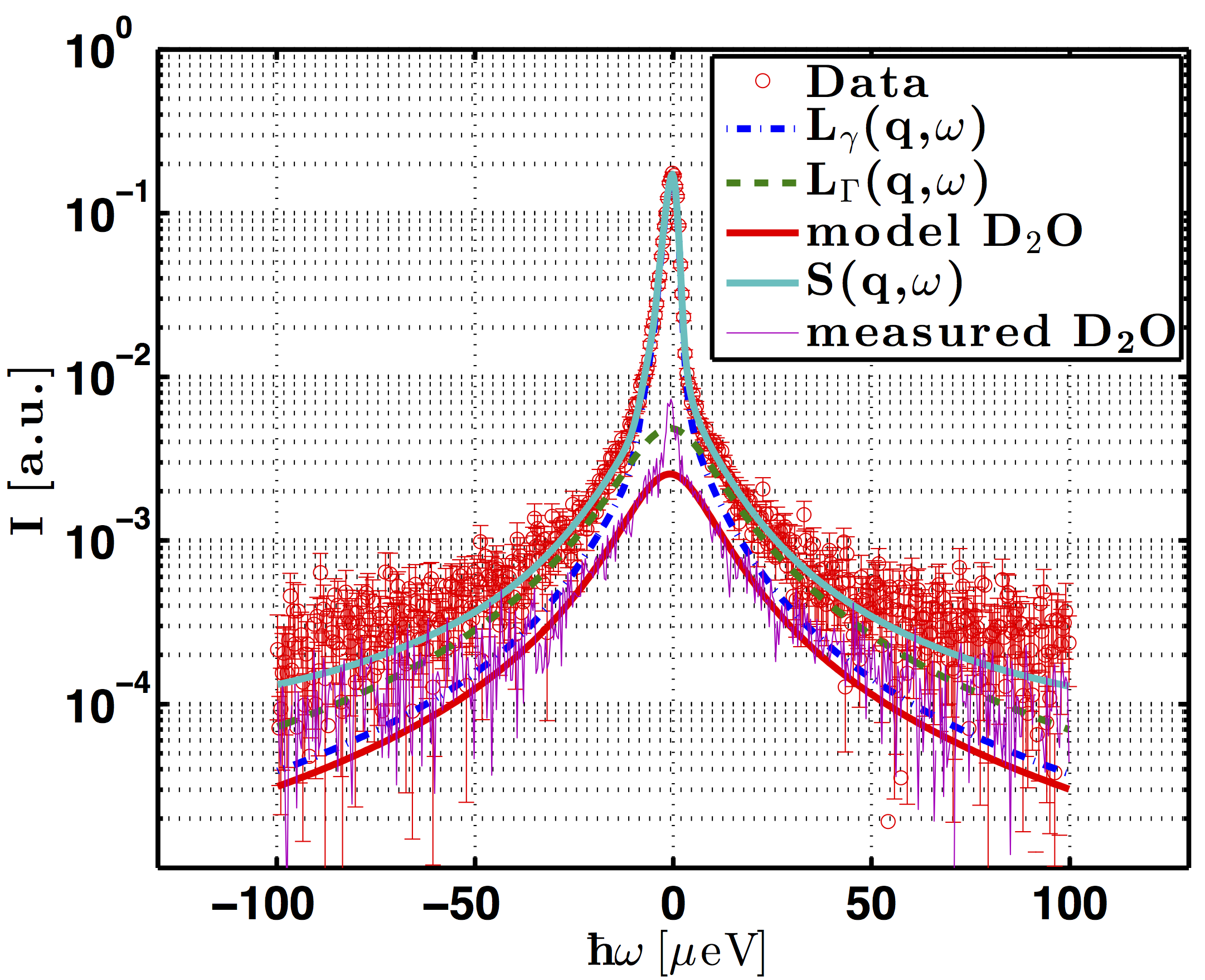In a typical neutron scattering experiment, the most important ingredients are:
- The incoming neutrons, with wave vector k = k̂ 2π/ λ, with the unit vector k̂ pointing in the direction of k and the wavelength λ;
- The sample, i.e. the scatterer;
- The scattered neutrons, with new wave vector k'. In principle, k' differs from k in both the magnitude | k' | and direction. The angle formed by these two vectors is defined as 2θ.
In QENS, the incoming neutrons have a kinetic energy of the order of 25 meV (thermal neutrons) or lower (cold neutrons), and the amount of energy transferred during a scattering event ranges from less than 1 μeV to ca. 100 μeV. Thus, although the incoming neutron can lose or gain energy from the interaction with the sample (inelastic scattering), the amount of such energy transfer ΔE = ℏω is sufficiently small to make the so-called elastic approximation. Consequently, the magnitude of the scattering vector q, defined as difference between outgoing and incoming wave vector, can be safely approximated to
A QENS measurement consists thus in counting the number of neutrons scattered as a function of the energy
transfer ℏω and scattering vector q (i.e. recording a series of spectra, see Examples). Such
spectra can then be related to the diffusion constant D of the particles within the sample by fitting them with
the Lorentzian function

Figure 1: Schematic representation of a neutron scattering experiment. Inset: Scattering geometry. Figure from [1].

